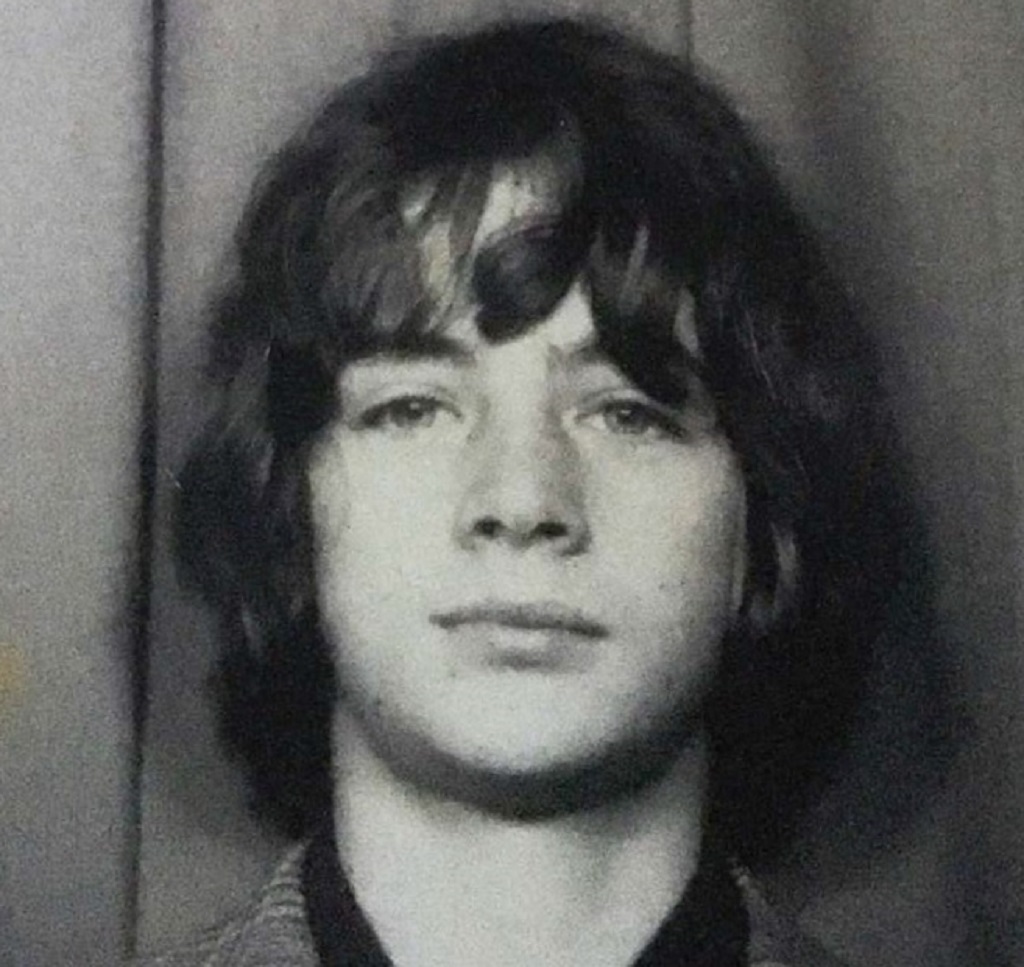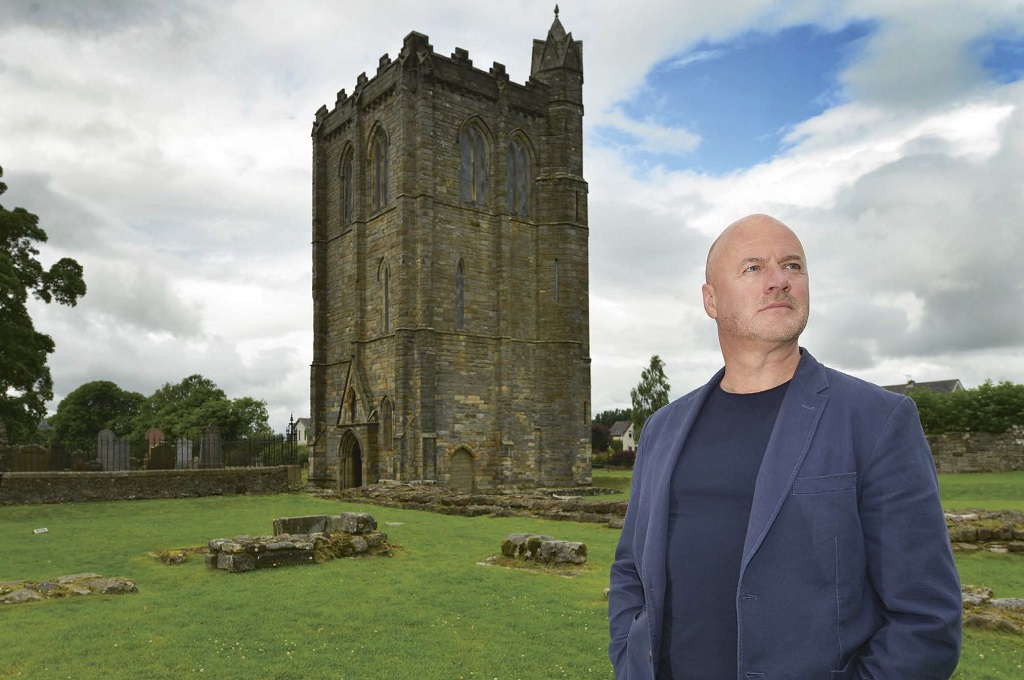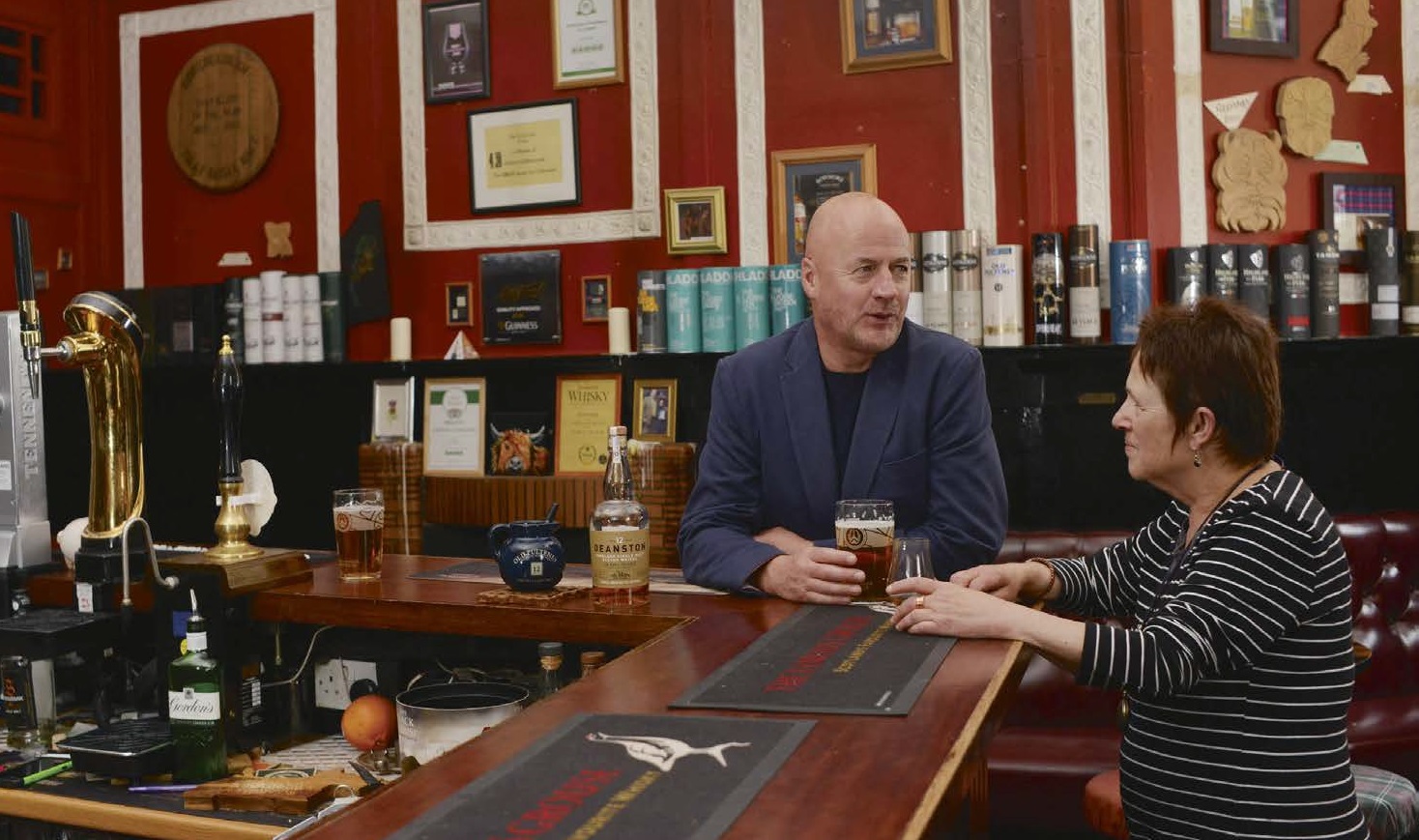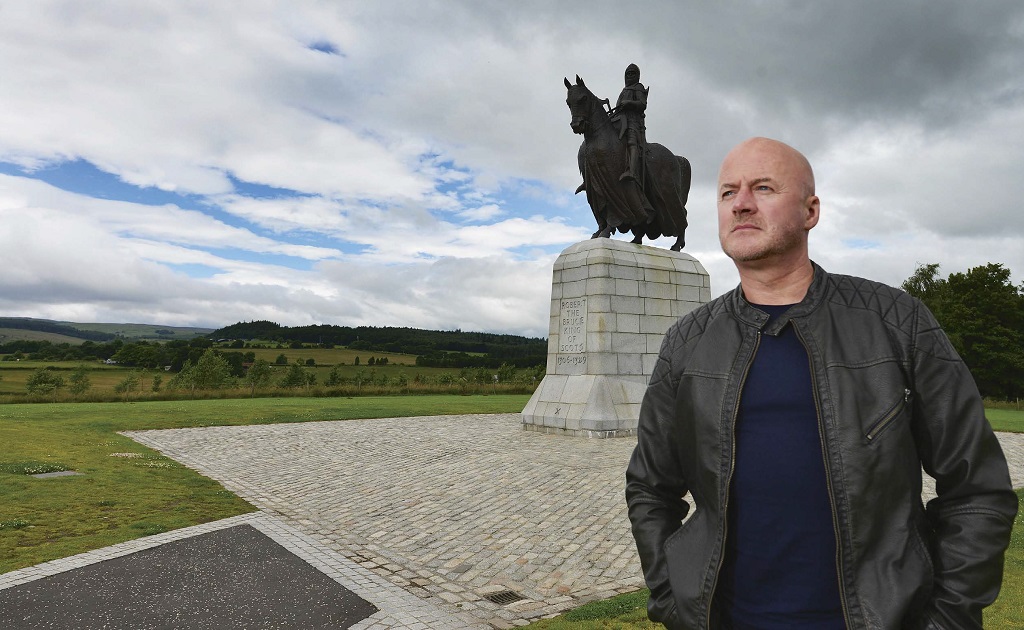
The life and crimes of author Craig Robertson
Crime writer Craig Robertson confesses to a fondness for cemeteries and his local 19th-century pub, as well as taking plenty of inspiration from his home town of Stirling.
I could probably be accused of being a bit of a fraud in one aspect of my writing. All but one of my books are set in Glasgow and readers often say one of the things they like most is the sense of place, about how I understand Glasgow.
The city undoubtedly has a dear, green place in my heart, but the truth is I’m not from there at all. I’m from Stirling. Born and bred a Son of the Rock and proud of it.
I did spend 20 years working in Glasgow, long enough that I can bluff my credentials there, but it was Stirling that shaped me and there that I continue to lay my head. It’s a fine place, even if it often takes seeing it through the eyes of an outsider to fully appreciate all that it has to offer.
My partner is also an author, the American crime writer Alexandra Sokoloff, and when she first arrived in Stirling, her eyes popped at all sorts of things I’d taken for granted. Like the castle. Like the Wallace Monument. Like cobbled streets and the Ochils, like pubs that are older than the USA, like graves of kings and queens and royal residences.
I’d stopped seeing these things, or at least thinking there was anything special about them, and it has been something of a gift to be given that wonder back.
But in many ways it’s hardly surprising that people in Stirling don’t fully appreciate all that the tourists do. When you are surrounded by the trappings of history from an early age, they become commonplace.
When I went to Borestone Primary School, our playing fields backed onto the site of the Battle of Bannockburn. We’d clamber over fences during lunch breaks and head for the heritage centre to explore the memorial rotunda and Pilkington Jackson’s enormous bronze statue of the Bruce on horseback.

Craig Robertson’s passport photograph for the family’s first foreign holiday to Spain when he was around 15.(Photo: Angus Blackburn)
Didn’t everyone go to school on the site of the country’s most famous battle? Didn’t everyone have a castle overlooking the town? Or a fabulously spooky old graveyard in the castle’s shadow where knights once jousted and where religious martyrs are celebrated in marble? Wasn’t everywhere once the capital of Scotland, a royal court, a royal burgh from 1130, of huge strategic significance since the Roman invasion and where Bruce and Wallace did their most celebrated stuff? Oh, just us then.
Despite – or more likely because of – all that history, I sometimes think Stirling is still trying to find itself, which is a bit ironic given it’s been on the same site since at least 655. We’re stuck in the middle of the country – near enough halfway between Glasgow and Edinburgh – at the crossroads both of the national road network and the big cities’ cultural identities.
I remember being at university in Dundee, sitting in a pub and two locals asking where I was from. When I told them, they launched into a furious argument between themselves as to whether Stirling was east coast or west coast.
What really bemused me was their insistence that it had to be one or the other. Maybe when you consider how narrow the waist of Scotland is, these guys had some kind of point, no matter how parochial. Stirling is the buckle in the central belt. It has shades of Glasgow and Edinburgh, but it isn’t either of them.
It’s another part of our identity problem. We’re really too small to be a city, too big to be a town (most locals still refer to it as a town, despite us getting city status in 2002); there are some very affluent areas and some not so; commuter-belt incomers and students; farms, former mining villages and the spa town of Bridge of Allan nearby; we’re an old place with a young, vibrant university scene; and we’re always somewhere between our past and our future. There’s a seemingly endless process of regeneration amidst the history, and much of the fabric of my upbringing has already disappeared.

Stirling is steeped in history, with the ruined Augustinian abbey at Cambuskenneth situated close to where the author now lives (Photo: Angus Blackburn)
My high school, where in Mr Oliphant’s third-year English class I was first told I had a talent for writing; the supermarket, where I worked on weekends and evenings as a teenager; the cinema where I saw my first movie; the municipal pool where I swam; the house we lived in from when I was four until my teens; all have been demolished. It’s slightly unsettling to see your childhood wiped away, while the history is, of course, resistant to all and any change.
I help run the Bloody Scotland crime writing festival, which is in Stirling each September. Authors from across the world come to town and many of them are friends of mine so I find myself doing the Scottish cringe thing of fearing they’ll only see the bad bits. Instead, everyone has said how fabulous it is and I’ve been able to glide gratefully from cringe to pride.
At the festival two years ago, we had the first crime writers’ football match between Scotland and England, with the opposing teams captained by Ian Rankin and Mark Billingham. I was in goal for Scotland and – not having much to do as we won so easily – I remember looking around in the sunshine and thinking that, yes, maybe it was pretty terrific.
We’d been given permission to play on the Guildhall bowling green, an ancient sward of lawn squeezed between three historic buildings: the magnificent Church of the Holy Rude, where John Knox preached and Mary Queen of Scots worshipped; the old town jail built in 1847; and the stunning 17th-century almshouse that is Cowane’s Hospital. Not your standard surroundings for a kickabout.
The part of Stirling where I now live, Riverside, is a pretty great place to live and work. It’s just a ten-minute walk from town and yet it is its own little island of calm. As the name might suggest, the River Forth loops round both ends of our street and it’s as picturesque and quiet as you’d like.
There is yet more history on the doorstep. The Battle of Stirling Bridge took place at the end of the road, the graves of James III and his queen, Margaret of Denmark, are another ten-minute stroll away at the ruined Augustinian abbey at Cambuskenneth, and our bedroom window looks out onto the Wallace Monument.

Craig at the traditional Curly Coo Bar, which hosts events as part of the Bloody Scotland crime fiction festival. (Photo: Angus Blackburn)
It’s a world away from the hustle, bustle and imagined carnage of the Glasgow of my novels.
So how did this handsome, historical burgh breed a writer of dark tales of urban crime? Perhaps because Stirling is not as handsome in parts as others, because its uglier side sits cheek by jowl with the tourist-brochure charm.
Like Glasgow, Stirling has areas pockmarked with poverty and social decline. To be fair to the local council, it has taken steps to address issues in areas like Raploch and St Ninians, and has achieved impressive regeneration despite having little cash to spend.
Still, these contrasts are meat and drink to a crime writer. I can take them, the inequalities and the imperfections, and paste them onto a city I know almost as well. There’s darkness everywhere if you know where to look for it.
I’ve been asked why I set my books in Glasgow rather than Stirling and the answer usually equates to my home town being too small. If you want to rack up the body count in a crime novel – and who doesn’t? – then it would quickly get a bit silly in Stirling and I’d be venturing into Midsomer Murders territory.
There’s probably also something about not wanting to drip blood on your own doorstep. I did set part of one of my books locally, though.
Cold Grave began on the idyllic setting of the Lake of Menteith with two people walking across the frozen lake to the island of Inchmahome in the middle, and only one of them walking back. Someone else came to a sticky end round the corner from my house, although I decided that was a bit too close to home and vowed to kill people further away in future.
There have been times when I’ve thought of moving to Glasgow, but I’d miss Stirling. The things I’ve described as being confusing about it are really strengths. It’s not too big, not too small, not too busy, not too quiet. It’s the town Goldilocks would have chosen. Alexandra and I do a lot of travelling, including spending plenty of time in California where she’s from, but it’s always great to get home and feel grounded in one location that feels just right.

The giant statue of Robert the Bruce by Pilkington Jackson was the young Craig’s favoured spot for exploring. (Photo: Angus Blackburn)
So, some of my favourite places and things to do in Stirling? A summer night’s walk along by the Forth in Riverside when, despite it heading towards midnight, it’s still light enough that you can see the Wallace Monument, the hills above Bridge of Allan and the shadows of Ben Ledi and Ben Vorlich. A pint or a whisky – or both – in the Curly Coo Bar on Barnton Street, a cracking little traditional pub run by the indefatigable Mandy, which we use as part of Bloody Scotland.
The Valley Cemetery in the old town just below the castle has always been one of my favourite places. Maybe that explains why I became a crime writer, but it really is a great place to visit. Check out the Ladies Rock, the Star Pyramid, the Pithy Mary and the astonishing views north across the carse.
Then there are the views from the top of Dumyat where you can see as far as the Forth bridges and the Pentland hills to the east and Arrochar to the west; the Green Gate curry house; the castle lit up in winter on top of the old volcano; the Black Boy fountain; the ever-changing colours of the Ochils; the old Crawford Arcade; the Stirling Smith Art Gallery and Museum; a visit to Argyll’s Lodgings; the ‘puggy’ – the unicorn on top of the Mercat Cross on Broad Street; the Victorian frontage of the railway station; the Settle Inn pub, which has been there since 1733; and the inside of my own front door.
Thanks to the eyes of others, I’ve remembered how to be a fan of my home town again, and that feels pretty good.
The 2020 Bloody Scotland crime fiction festival is scheduled to run in Stirling from 18-20 September.
(This feature was originally published in 2016)
TAGS

